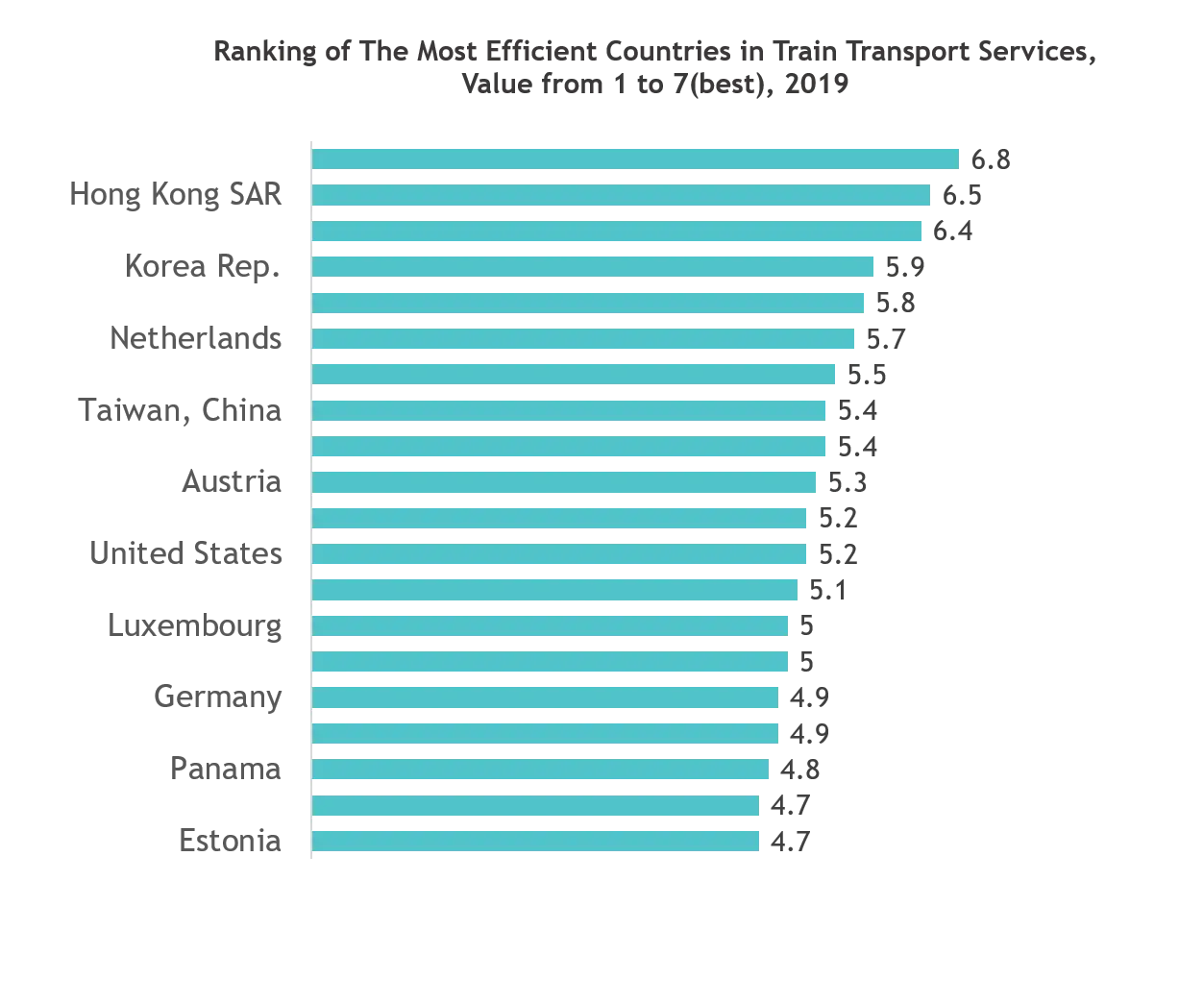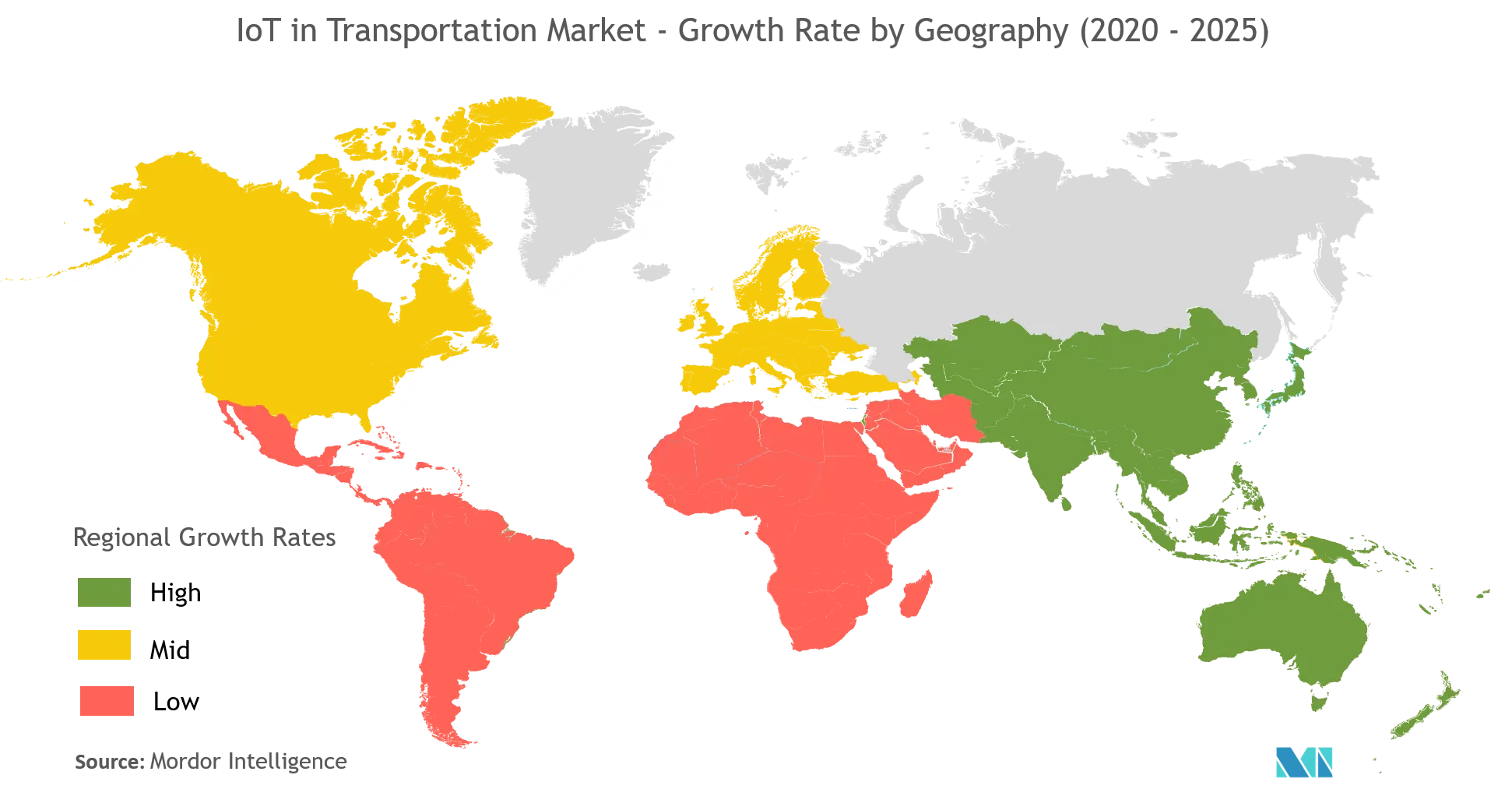Market Trends of IoT in Transportation Industry
This section covers the major market trends shaping the IoT in Transportation Market according to our research experts:
The Railway Segment is Expected to Occupy Significant Market Share
- Time-table management, capacity optimization, timely travel service, and predictive maintenance are the primary reasons for the adoption of IoT solutions in railways systems. The rail network operators in developed parts of the world are actively investing in the development of analytics systems. Currently, cloud-based systems are prominent. For instance, Network Rail, UK, recently partnered with Deloitte to leverage the railway signaling systems to deliver 92.5% public performance measure (PPM).
- The growth of the railway system is expected to be primarily driven by the growing need for urban connectivity, and a higher emphasis on reducing emissions. By 2050, it is expected, that passenger mobility will increase by 200-300% and freight activity will increase by 150-250%, according to the International Transport Forum.
- The amount of data being generated by the rail network is driving the adoption of an IoT solution. According to leading railroad authority Lyndon Henry, over 1.5 million freight cars are handled by the U.S. railroads handle and monitor daily. This creates a huge amount of data over the cloud.
- However, there are many challenges to connectivity whilst on a train. The metal body of the train significantly weakens the network signal. Also, the use of multiple users reduces the capacity of the network, and tunnels block the signals. These are some of the technical limitations, restricting the deployment of IoT solution by the railway operators across the world.

North America to Hold a Significant Share in the Market
- The North America region is expected to dominate the IoT in the transportation market due to the strong presence of manufacturing and transportation and logistics industries with several technological advancements in the region. Also, government initiatives and regulations in various end-user industries are expected to proliferate the market growth in the region.
- For instance, the Federal Highway Association (FHWA), along with the American Association of State Highway and Transportation Officials (AASHTO), State and local departments of transportation (DOTs) have been encouraging the application of asset management in the transportation and logistics industry and hence promoting the application of IoT solutions in the transportation industry.
- International and domestic companies in the logistics industry of the United States have benefited from a highly skilled workforce and relatively low costs. according to the data from Select USA, United States Business Logistics Costs reached USD 1.6 trillion in 2018, which is 8% of GDP, indicating the high-level activity in the region.
- Moreover, the region has always been dominant in technology adoption in almost every end-user industry and has been one of the largest regions to implement IoT across industries. For instance, in March 2019, NimbeLink, a provider of cellular Internet of Things (IoT) solutions and services, started providing its NimbeLink AT2 Asset Tracking Solution in Canada, on the TELUS LTE-M network. Also, in February 2020, NimbeLink collaborated with Amazon Web services to launch LTE-M cellular-based asset tracking solutions.


